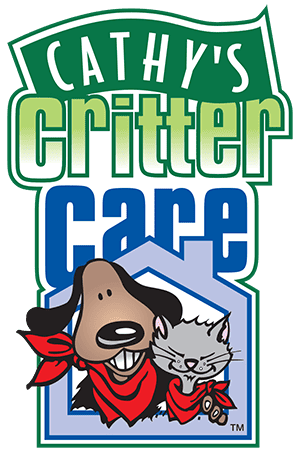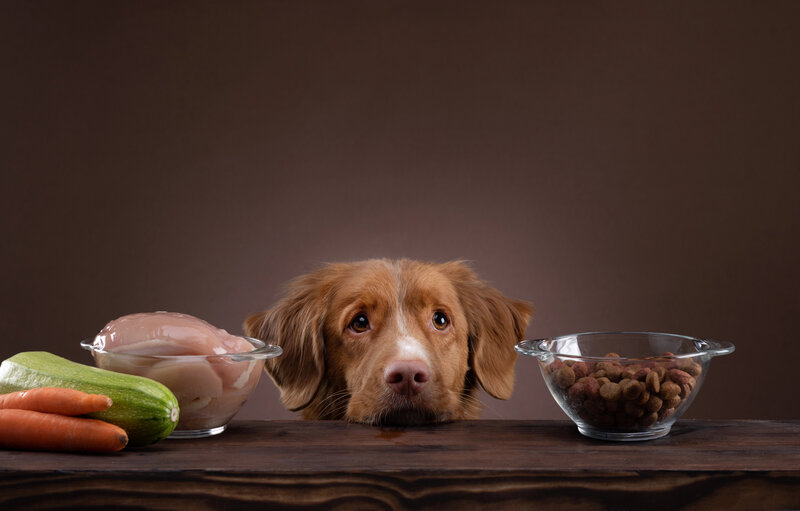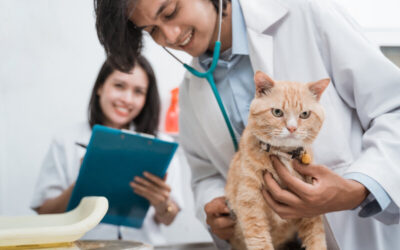Thinking about switching your furry friend’s diet to something more natural? You’re not alone. Many pet owners are turning to raw diets, intrigued by the promise of improved health and vitality for their dogs and cats.
A raw diet typically includes uncooked meats, bones, fruits, and veggies—aiming to mimic the ancestral eating habits of pets. This holistic approach is gaining traction, but it’s wrapped in myths and misconceptions. From shiny coats to better digestion, the benefits sound appealing, but what’s the real scoop?
And how do you ensure it’s safe and nutritionally balanced for your beloved pet? Dive into our comprehensive guide on raw diets for pets, where we debunk myths, highlight benefits, and provide essential guidelines to help you make an informed decision. Whether you’re curious or convinced, understanding the ins and outs of raw feeding is crucial for your pet’s health and happiness.
What Is A Raw Diet For Pets?
A raw diet for pets, primarily focusing on dogs and cats, consists of feeding them food that closely mimics what their wild ancestors would eat. This diet mainly includes raw meat, bones, fruits, and vegetables. The core goal of such a dietary plan is to provide pets with a more natural eating experience, which many believe leads to better health outcomes compared to processed pet foods.
This approach is grounded in the idea that a diet free from artificial preservatives, colors, and flavors, and high in natural nutrients, can lead to improved digestion, healthier skin and coat, more energy, and fewer health problems overall. Understanding the intent behind searching for information on a raw diet for pets reveals a network of concerns and interests ranging from pet health and nutrition to natural living and preventive wellness. Pet owners exploring this option are often motivated by a desire to offer their pets the best possible quality of life, mirroring a broader trend towards more organic and unprocessed foods in human diets.
However, it’s important for pet owners to research and consider the diet’s specifics, including potential risks and the need for nutritional balance, to ensure their pets’ well-being.
Why Choose Raw Diets?
Choosing a raw diet for pets is driven by the desire to align their feeding habits more closely with their natural dietary patterns. Such diets are believed to tap into the natural eating habits of dogs and cats, offering perceived health benefits that are not typically found in commercially processed pet foods. The primary motivations include the potential for an improved coat and skin, enhanced dental health, higher energy levels, and better digestion.
These benefits reflect a broader interest in providing pets with a high-quality life through nutrition that mimics their ancestral diet. However, it’s crucial for pet owners to weigh these perceived advantages against the risks and ensure they’re making informed choices based on a comprehensive understanding of their pet’s nutritional needs.
Natural Eating Habits
Natural eating habits for pets focus on diets that mirror the eating patterns of their wild ancestors. This approach emphasizes feeding raw meats, bones, and selective fruits and vegetables. Examples of raw foods that mimic the ancestral diet include beef, chicken, rabbit, and other meats, which contribute to a pet’s health by providing essential proteins, fats, and minerals.
The goal is to offer a diet that is both instinctively appealing and biologically suitable, closely replicating the nutritional environment experienced by their wild relatives.
Perceived Health Benefits
The perceived health benefits of adopting a raw diet for pets are numerous. Proponents argue that such diets can lead to shinier coats, healthier skin, enhanced dental health, elevated energy levels, and improved digestion. These advantages are attributed to the diet’s reliance on high-quality, unprocessed ingredients, delivering nutrients in their most bioavailable form.
For instance, studies and anecdotal evidence suggest that pets on raw diets may exhibit improved dental health due to the mechanical action of chewing raw bones, which helps reduce plaque and tartar build-up. Additionally, the high protein content in raw diets is often linked to higher energy levels in pets, supporting more active and vibrant lifestyles. While these benefits are compelling, it’s crucial for pet owners to critically evaluate these claims, considering the scientific evidence and the unique nutritional needs of their pets.
Claimed Benefits Of Raw Diets
The claimed benefits of raw diets for pets focus on enhancing their overall health and vitality. Advocates argue that such diets lead to improved coat and skin health, with pets showcasing shinier coats and reduced instances of skin irritation. Dental health benefits are also emphasized, as raw diets are believed to contribute to cleaner teeth and healthier gums due to the natural chewing and tearing actions required.
Furthermore, these diets are linked to higher energy levels and better digestion, attributed to the high-quality, unprocessed nature of the ingredients. These benefits collectively present a compelling case for pet owners to consider raw diets as a means to provide their companions with a more natural and nutritious feeding option.
Improved Coat And Skin
Pets on raw diets often showcase shinier coats and healthier skin. The inclusion of natural fats and oils in raw meat, especially omega-3 fatty acids found in certain raw fish, plays a crucial role in mitigating dryness and reducing skin irritation. These essential fatty acids are vital for maintaining healthy skin and a glossy coat, offering a clear advantage over diets lacking in these nutrients.
Enhanced Dental Health
The act of chewing raw bones and meat serves as a natural toothbrush, effectively scraping away plaque. This results in stronger teeth and healthier gums, highlighting a significant dental health benefit of raw diets. Testimonials and veterinary observations often cite reduced tartar buildup and fresher breath as tangible benefits of a raw feeding regimen.
Higher Energy Levels
Due to their high protein and nutrient content, raw diets provide pets with a steady and reliable source of energy. Comparative studies and expert opinions suggest that pets on raw diets exhibit higher energy levels and increased vitality compared to those on commercial diets. This is attributed to the diet’s rich nutritional profile, which supports optimal metabolic function and energy production.
Better Digestion
Raw diets are rich in natural enzymes, facilitating more efficient digestion for pets. These enzymes, which are often destroyed in the cooking process of commercial pet foods, play a crucial role in breaking down food and enhancing nutrient absorption. Improved nutrient absorption and a reduction in digestive issues like bloating or constipation are direct benefits of this diet’s natural composition, offering a significant advantage for pets with sensitive digestive systems.
Common Myths About Raw Diets
Several myths circulate about raw diets, leading to misconceptions regarding their safety and efficacy. A prevalent belief is that raw diets inherently provide a complete nutritional balance for all pets, which is not always accurate without meticulous planning and understanding of a pet’s nutritional needs. Another common misconception is that feeding pets a raw diet can prevent all diseases, ignoring the fact that genetics, environment, and other lifestyle factors also significantly influence a pet’s health.
Additionally, the safety of raw meat is often overstated, with the risks of bacterial contamination and potential choking hazards sometimes minimized or overlooked. It’s essential for pet owners to navigate these myths with a critical eye, making informed decisions grounded in a comprehensive understanding of both the benefits and risks associated with raw diets.
Complete Nutritional Balance
A prevalent myth suggests that raw diets inherently offer a complete nutritional balance. However, attaining an optimal nutrient profile demands careful ingredient selection and, in some cases, the addition of supplements to address a pet’s unique dietary requirements. The complexity of achieving a balanced diet is often underestimated, leading some pet owners to inadvertently neglect essential vitamins or minerals, which can have long-term health implications for their pets.
Prevention Of All Diseases
It’s a common misconception that raw diets can prevent all diseases in pets. While a thoughtfully composed raw diet can enhance a pet’s health, it’s crucial to acknowledge the significant impact of genetics and environmental influences on disease prevention. Expert insights suggest that no diet, regardless of how natural or balanced it is, can guarantee immunity against all health issues.
Factors such as breed-specific predispositions and external environmental conditions play a substantial role in a pet’s overall health.
Safety Of Raw Meat
The assumption that raw meat is entirely safe for pet consumption overlooks critical risks. Issues such as bacterial contamination pose significant health threats to both pets and their human companions, while the potential for choking or internal injury from bone fragments cannot be ignored. Studies and statistics reveal that raw pet foods can harbor pathogens like Salmonella and _E.
coli_, with reported cases of both pets and humans becoming ill from handling or consuming contaminated raw diets. These risks underscore the importance of practicing strict hygiene and safety measures when preparing and serving raw meals to pets.
Risks Of Raw Diets
While raw diets for pets are touted for their health benefits, they come with inherent risks that should not be overlooked. Nutritional imbalances are a primary concern, as homemade raw diets may lack essential nutrients necessary for a pet’s overall health. Bacterial contamination poses a significant risk, with raw meats potentially harboring harmful pathogens like Salmonella and _E.
coli_, which can affect both pets and their human handlers. Additionally, raw diets can present choking hazards or cause internal damage due to bones. It’s imperative for pet owners to recognize these risks and implement measures to mitigate them, ensuring the safety and well-being of their beloved pets.
Nutritional Imbalances
Nutritional imbalances present a significant risk in raw diets, particularly those that are homemade. Pets may not receive the full spectrum of essential vitamins, minerals, and nutrients required for their overall health and well-being. Common deficiencies in raw diets include calcium, vitamin D, and phosphorus, which can lead to health issues such as rickets in young animals, and dental and bone problems in adults.
Bacterial Contamination Risks
Bacterial contamination is a considerable risk associated with raw diets. Raw meats can be carriers of dangerous pathogens such as Salmonella and E. coli.
For instance, a study published in the Journal of the American Veterinary Medical Association found that 20% of raw poultry diets tested were contaminated with Salmonella. These pathogens pose serious health risks to both pets and their human families, leading to illnesses that can range from mild gastrointestinal distress to severe, life-threatening conditions.
Choking Hazards
Choking hazards and the potential for internal damage from bones are critical concerns when feeding pets a raw diet. There have been numerous case reports in veterinary literature documenting instances of pets experiencing choking, intestinal blockages, and perforations caused by bone fragments. For example, a case study in the Veterinary Record reported a dog that developed an intestinal obstruction from a raw diet bone, requiring surgical intervention.
These risks highlight the importance of careful bone selection and supervision when feeding raw diets to pets.
Implementing A Raw Diet Safely
To safely transition pets to a raw diet, it’s essential for pet owners to consult with a veterinarian. This ensures the diet is tailored to meet the specific nutritional needs of their pet. Acquiring knowledge on nutritional balance is crucial to prevent any nutritional deficiencies or excesses that could adversely affect the pet’s health.
Moreover, safe handling practices must be adopted to minimize the risks associated with bacterial contamination from raw meats. By following these guidelines, pet owners can navigate the complexities of a raw diet, providing their pets with its benefits while safeguarding against potential risks.
Veterinary Consultation
Veterinary consultation is paramount when considering a raw diet for pets. A veterinarian can offer tailored guidance that aligns with the pet’s specific health conditions, age, and dietary needs, ensuring the diet promotes optimal health. Anecdotes from pet owners who’ve seen significant health improvements under veterinary guidance can underscore the value of professional advice.
Experts often highlight the risks of transitioning without a vet’s input, such as nutritional imbalances or exacerbating pre-existing conditions.
Nutritional Balance Knowledge
Gaining knowledge of nutritional balance is crucial for pet owners. It involves understanding how to accurately balance proteins, fats, vitamins, and minerals to avoid any nutritional gaps or excesses, ensuring a well-rounded diet. Resources such as the National Research Council’s guidelines for dog and cat nutritional requirements, or tools like balanced diet calculators available on veterinary health websites, can be invaluable for pet owners.
Workshops or webinars hosted by animal nutritionists can also provide deep insights into crafting a balanced raw diet.
Safe Handling Practices
Implementing safe handling practices is essential to mitigate the risks associated with raw meat. This encompasses thoroughly washing hands, surfaces, and cooking tools, as well as practicing proper storage and preparation techniques to prevent bacterial contamination. The Centers for Disease Control and Prevention (CDC) and the American Veterinary Medical Association (AVMA) offer specific guidelines on safe handling practices for raw pet food.
These include using separate utensils for pet food preparation, storing raw meat at appropriate temperatures to prevent bacterial growth, and avoiding cross-contamination with human foods.
Guidelines For Raw Diets
Feeding pets a raw diet requires adherence to specific guidelines to ensure their health and safety. It’s essential to emphasize the importance of a balanced diet, which is key to preventing nutritional deficiencies and promoting overall well-being. Regular veterinary check-ups are recommended to assess the pet’s health and make necessary adjustments to their diet.
Moreover, monitoring health changes closely allows pet owners to gauge the effects of the raw diet and address any issues promptly. By following these guidelines, pet owners can effectively navigate the raw feeding process, ensuring their pets receive the maximum benefits from their dietary regimen.
Balanced Diet Importance
The importance of a balanced diet cannot be overstated for pets on raw diets. Ensuring a comprehensive mix of essential nutrients—proteins, fats, vitamins, and minerals—tailored to the pet’s unique requirements is key to preventing nutritional deficiencies and promoting optimal health.
| Nutrient | Function | Sources |
|---|---|---|
| Protein | Muscle growth and repair | Muscle meats, organs |
| Fats | Energy and cell function | Marrow, fatty meats |
| Vitamins | Various metabolic functions | Liver, vegetables |
| Minerals | Bone health, metabolic processes | Bones, vegetables |
Regular Veterinary Check-Ups
Regular veterinary check-ups play a crucial role in maintaining the health of pets on raw diets. These appointments provide an opportunity for health assessments and necessary dietary adjustments, ensuring the diet remains beneficial for the pet’s specific health needs.
| Frequency | Purpose | Examples |
|---|---|---|
| Every 6 months | Health assessment, dietary adjustments | Bloodwork, weight monitoring |
| Annually | Comprehensive health check | Dental check, parasite control |
Monitoring Health Changes
Closely monitoring health changes is essential for pets transitioning to or maintained on raw diets. Paying attention to changes in energy levels, coat quality, weight, and general behavior helps gauge the effectiveness of the diet and indicates when it might be time to reevaluate dietary choices.
| Indicator | Positive Change | Concerning Change |
|---|---|---|
| Energy Levels | Increased vitality | Lethargy, fatigue |
| Coat Quality | Shinier, healthier coat | Dullness, excessive shedding |
| Weight | Stable, healthy weight | Sudden loss or gain |
| Behavior | Active, engaged | Withdrawn, changes in appetite |
Types Of Raw Diets
Raw diets for pets are categorized into two main types: commercially prepared raw foods and home-prepared raw meals.
Commercially Prepared Raw Foods
Commercially prepared raw foods present a convenient solution for those exploring raw diets for their pets. These products, typically available in frozen or freeze-dried formats, are formulated to fulfill a pet’s nutritional needs comprehensively, eliminating the necessity for additional supplementation. They offer an easy entry into raw feeding by guaranteeing a balanced diet in every serving.
| Type | Format | Nutritional Completeness | Standards/Certifications to Look For |
|---|---|---|---|
| Frozen Raw Foods | Frozen patties or chunks | Formulated to be complete and balanced | AAFCO (Association of American Feed Control Officials) approval, USDA certified |
| Freeze-Dried Raw Foods | Freeze-dried pellets or morsels | Often requires rehydration, formulated to be complete and balanced | NASC (National Animal Supplement Council) seal, Non-GMO verified |
| Raw Meaty Bones | Packaged frozen bones | Supplemental feeding option, not complete | Sourced from reputable suppliers, human-grade |
Home-Prepared Raw Meals
Home-prepared raw meals allow pet owners to tailor their pet’s diet with precision. This method involves the careful selection and preparation of specific meats, bones, and a variety of fruits and vegetables. It demands a thorough understanding of nutritional requirements to ensure the diet is complete and balanced, providing all the essential nutrients for a pet’s health and well-being.
| Component | Recommendations | Nutritional Role |
|---|---|---|
| Meats (Muscle & Organ) | Variety (beef, chicken, lamb, etc.), including liver and kidneys | Primary source of protein and essential nutrients |
| Bones | Raw, edible bones (chicken necks, wings) or bone meal | Calcium and phosphorus source |
| Fruits & Vegetables | Leafy greens, carrots, apples (no seeds) | Vitamins, minerals, and fiber |
| Supplements | Depending on the pet’s needs: vitamin E, fish oil, etc. | Fill nutritional gaps |
The choice between commercially prepared and home-prepared diets hinges on the pet owner’s willingness to commit to the necessary research and preparation to maintain their pet’s health on a raw diet.
Selecting Ingredients For Home-Prepared Diets
Selecting the right ingredients is pivotal in creating a home-prepared raw diet that fulfills all nutritional requirements for pets. Essential to this process is choosing appropriate meats and bones, which are vital for providing protein and minerals. Incorporating fruits and vegetables adds necessary vitamins and fiber, aiding in digestion and overall health.
However, it’s equally important to be aware of and avoid toxic foods that are harmful to pets, such as onions, grapes, and chocolate. A thorough understanding of which ingredients are nutritionally beneficial and which to exclude is crucial for pet owners preparing their pet’s meals, ensuring a diet that is both balanced and safe.
Appropriate Meats And Bones
| Meat/Bone Type | Recommended | Notes |
|---|---|---|
| Beef | Yes | High in protein; choose lean cuts |
| Chicken | Yes | Include bones for calcium (ensure they are raw to avoid splintering) |
| Lamb | Yes | Good source of dietary fat |
| Turkey | Yes | Lean and rich in nutrients |
| Pork | No | Risk of parasites; high in fat |
| Fish | Yes (with caution) | Remove all bones; certain types like salmon are excellent sources of omega-3 |
| Bones (non-weight bearing) | Yes | Provides calcium; avoid cooked bones as they can splinter |
Incorporating Fruits And Vegetables
| Fruit/Vegetable | Recommended | Notes |
|---|---|---|
| Carrots | Yes | High in fiber and vitamins |
| Apples | Yes (without seeds) | Remove seeds and core; high in vitamins |
| Blueberries | Yes | Antioxidant-rich |
| Spinach | Yes | High in iron and antioxidants; use in moderation due to oxalates |
| Grapes | No | Toxic, can cause kidney failure |
| Onions | No | Can lead to anemia |
| Garlic | No | Can be toxic in large quantities |
Avoiding Toxic Foods
| Toxic Food | Reason for Toxicity |
|---|---|
| Chocolate | Contains theobromine, which is toxic to dogs and cats |
| Xylitol (found in sugar-free foods) | Can cause insulin release leading to liver failure |
| Grapes and Raisins | Can cause acute kidney failure |
| Onions and Garlic | Can cause oxidative damage to red blood cells, leading to anemia |
| Avocado | Persin in avocado can be toxic |
| Alcohol | Can lead to intoxication, coma, and death |
| Caffeine | Similar to chocolate, contains substances that can be toxic |
Selecting the appropriate ingredients for a home-prepared raw diet requires careful consideration to ensure the health and safety of your pet. Always consult with a veterinarian or a pet nutritionist when in doubt about certain foods or dietary needs.
Transitioning To A Raw Diet
Transitioning a pet to a raw diet involves a gradual introduction of raw foods, allowing the pet’s digestive system time to adapt. Beginning with small portions of raw food mixed with their current diet and slowly increasing the raw component is advisable. Observing the pet’s reaction during this period is crucial; attention should be paid to their energy levels, coat condition, and overall well-being.
Based on these observations, adjusting portions and ingredients as needed can help ensure a smooth transition. This methodical and attentive approach is key to safely and effectively adapting pets to their new dietary regimen.
Gradual Introduction
Initiating a gradual introduction to a raw diet is key. Begin by incorporating small quantities of raw food into their current meals, slowly increasing the amount of raw food over a period to gently acclimate their digestive system to the change.
Observing Pet’s Reaction
Closely observing the pet’s reaction to the new diet is imperative. Monitor for any changes in energy levels, coat quality, and general health indicators to ensure the transition is beneficial and does not negatively impact their well-being.
Adjusting Portions And Ingredients
Based on observations of the pet’s adaptation, adjusting portions and ingredients might be necessary. Fine-tuning the diet to cater to the pet’s unique nutritional requirements and taste preferences is crucial for achieving optimal health outcomes and a smooth transition to raw feeding.
Transition Plan And Observations Table
To facilitate a detailed and structured approach to transitioning pets to a raw diet, the following table outlines a step-by-step plan along with key observations to monitor:
| Week | Raw Diet Proportion | Observations to Monitor | Adjustments if Needed |
|---|---|---|---|
| 1 | 25% raw / 75% current | – Energy levels | |
| – Stool consistency | |||
| – Appetite | If digestive upset occurs, reduce raw proportion to 10% and consult a veterinarian. | ||
| 2 | 50% raw / 50% current | – Coat condition | |
| – Energy levels | |||
| – Any signs of allergies | If improvements in energy or coat are noted, continue. If not, consider different raw ingredients. | ||
| 3 | 75% raw / 25% current | – Weight | |
| – General behavior | |||
| – Digestive health | Adjust raw portion size if weight loss or gain is significant. Consult a veterinarian for drastic changes. | ||
| 4 | 100% raw | – Overall well-being | |
| – Energy and activity levels | |||
| – Coat and skin health | Continue monitoring and make minor adjustments to ingredients based on pet’s preferences and health indicators. Regular veterinary check-ups recommended. |
This transition plan provides a structured approach to gradually introduce raw foods into your pet’s diet while closely monitoring their reaction and making necessary adjustments. It’s crucial to proceed with caution and consult a veterinarian, especially if any adverse reactions are observed during the transition.




